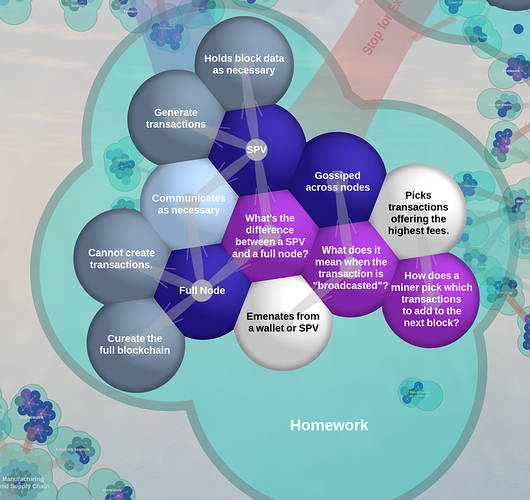Homework on Bitcoin Ecosystem - Questions
- What is the difference between a SPV (simplified payment verification) and a full node?
Full node has a full copy of blockchain, keep mempool and verify the network. SPV is just connecting to multiply nodes to send, recieve transactions.
- What does it mean when a transaction is broadcasted?
It is propagated to the network, that other nodes will see and validate the new transaction and add it to the mempool.
- How does a miner pick which transactions that gets added to the next block?
The miner is driven by the transaction fee to make as much money as he can. It is based on the ratio of satoshi per byte. The block is limited, this is why they care about this ratio.

